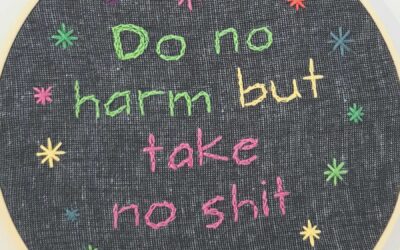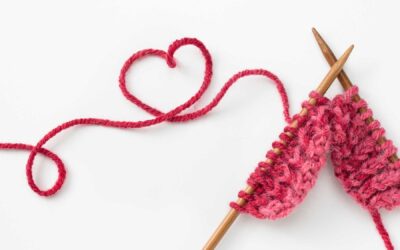If you’ve never thought about embroidery as an exercise in mindfulness, prepare yourself. That’s because the art of creating images with small and neat stitches is perfect for creative healing.
It has a deep meditative quality, forcing us to slow our breath and heart rates, calming our thoughts, steadying our hands and allowing us to live in the moment. I started after suffering a suicidal breakdown following severe post-natal depression and PTSD. As I healed I felt the need to be creative and so I tried embroidery. It immediately calmed me and I was addicted. So addicted that I’m now a professional full-time hand embroiderer specialising in human anatomy.
Happily, you don’t have to be a professional stitcher to also experience mindful embroidery. It’s open to anyone with minimal equipment and can be done in your own home. Here’s what you need to try it:
[Editor’s note: all the pictures are mine – Paula’s – all the wonkiness is mine too!]
Embroidery equipment
(all of which can be cheaply purchased from LoveCrafts)

- The PDF pattern and the stitch video that accompanies this post (which you can download here)
- An embroidery hoop no smaller than 7in diameter
- A crewel needle (although any needle with a large enough eye for your thread will work)
- Embroidery thread (one skein is more than enough. Just chose a colour that you love)
- Carbon paper to trace the PDF pattern onto fabric
- Any cotton fabric (I use calico but you can recycle a non-stretch garment or even a tea towel)
- Sharp scissors
Preparing your fabric
Prepare by downloading and printing the PDF pattern. Place your fabric right side up on a flat surface, place your carbon paper ink-side down on top of it and the pattern on top of that, design facing up.
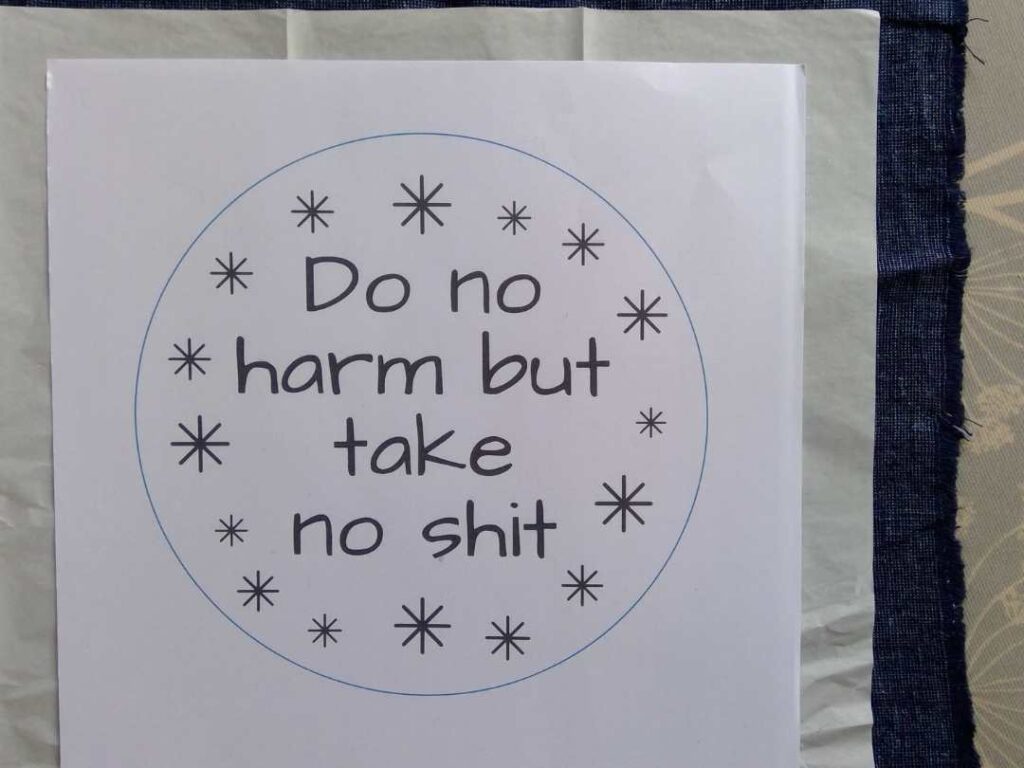
Hold the corners down with anything heavy. Trace over the design with a pen or pencil pressing hard enough that the ink leaves a ‘printed’ design on the fabric.
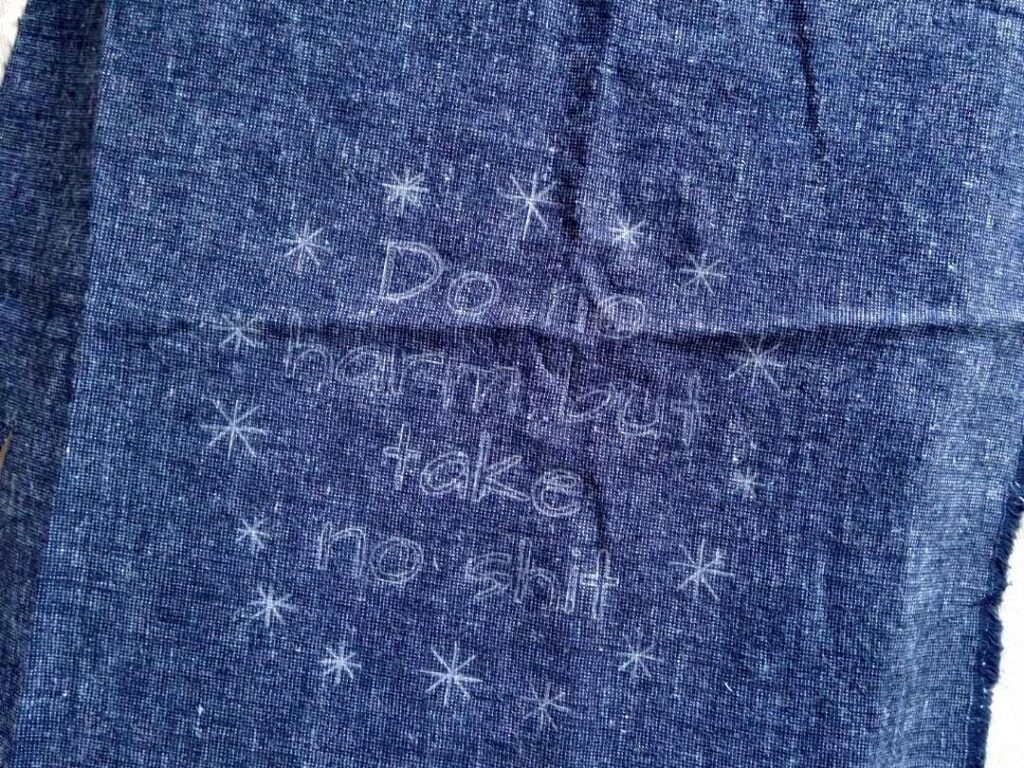
Then remove the inner ring of your embroidery hoop (loosen the top screw) also laying it on a flat surface. Place your fabric only over the top of it so that it sits evenly on all sides and the design is facing up. Slip the outer ring down over it so that the fabric is trapped between both rings with the design at the centre. Tighten the screw while also gently pulling the fabric so that it becomes taut in the hoop. Keep tightening the screw and pulling the fabric, but without distorting the design, until you can drum your fingers on it. That’s when it’s ready to stitch.
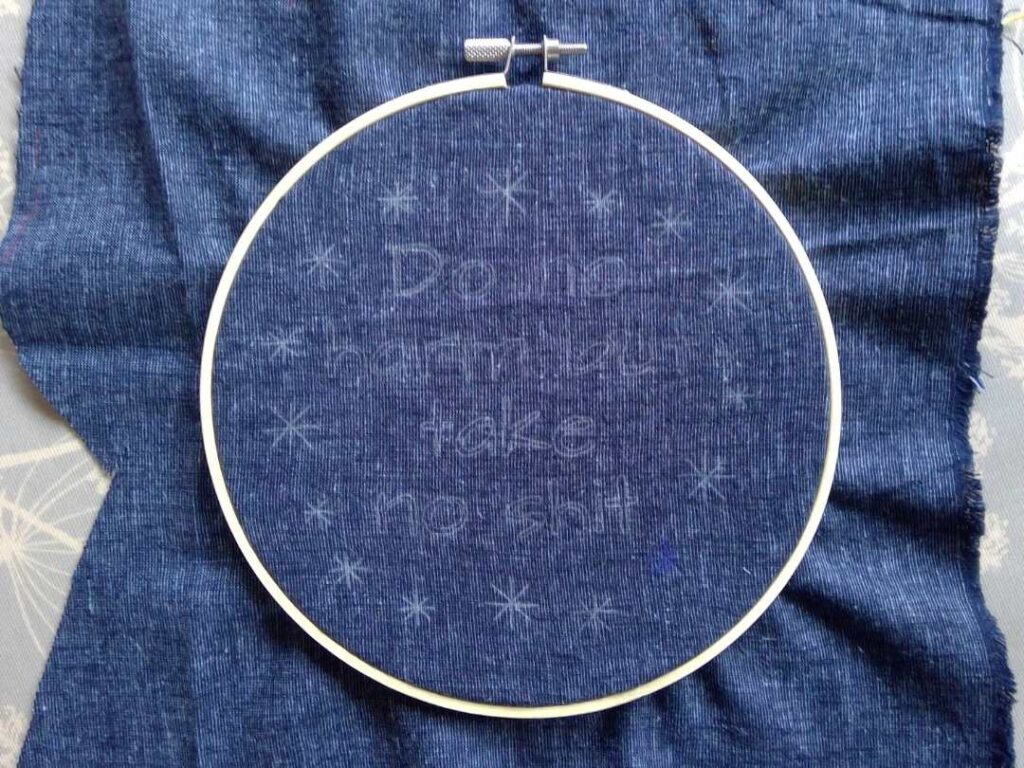
How to embroider mindfully
Pick a light, comfy and calm spot in your home. It might be in a favourite armchair or at a well-lit table. By doing this your body and mind will soon associate that space with slowing down and stitching.
Arrange your chosen spot so your needles, threads and scissors are easy to reach. The point is that you focus on mindful movement rather than constant rummaging and fidgeting.
You might like to use a scent that you can associate with your embroidery. It could be a candle, aromatherapy oil or just your favourite cuppa steaming at your side. This is about engaging all of your senses.
When you’re ready to stitch… do nothing at all. Shut your eyes, taking slow and deep breaths to centre yourself. Feel your embroidery hoop in your lap. Do this until your heart rate has slowed and your breathing is even.
Embrace the slow speed of what you’re about to do. Remember that you’ll take your time, look carefully at each stitch and notice the sound every time the needle pierces the fabric… the treasure is in the journey, not the destination.
Use the stitch shown in the film if you don’t know any others. It’s a basic stitch so you won’t get drawn into the technicalities of anything complex. Start wherever on the design feels comfy and trace the lines of the pattern.
Enjoy using the same stitch repetitively. Each stitch is supposed to be identical to the last but for now just notice how they differ or improve as you move across the fabric. And be happy with any wonkiness. It’s a sign that you’re tried something completely new which is always a step forward.
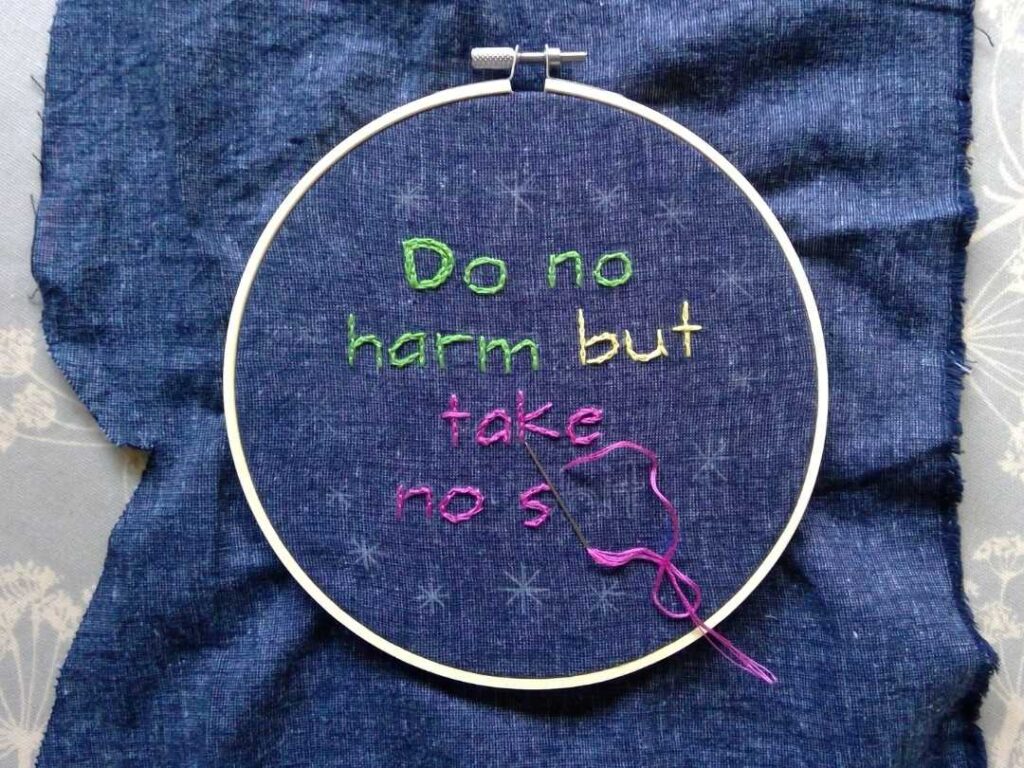
Notice all of your senses when you stitch. How does the fabric feel against your fingers? What does the needle sound like as it punctures the weave? Can you see how the thread twists as you work it? And can you taste or smell the cuppa that accompanies you?
Use your stitches to regulate your breath. Draw the needle up with the in-breath and down with the out-breath. It takes practice but it is deeply absorbing. You’ll notice the difference it makes to how you feel and even the neatness of your stitches.
Allow your mind to wander but always come back to your current stitch. All sorts of thoughts pop up when you embroider but use the pulling of the thread as an anchor, bringing your attention back to the fabric.
Notice how you feel as time passes. Have your shoulders relaxed since you began? Does your heart rate feel more even? Does any anxiety feel less nagging?
Use a mantra, phrase or word that helps focus your mind. So each time you take the needle down into the fabric you could say to yourself “I am….safe/ loved/ hoping/ supported/ healing”. Try whatever reassures you.
Remember that your stitches never have to be pretty or perfect. In fact I always tell new embroiderers to create something ugly. It immediately dissolves performance pressure and helps them get used to the needle and thread. Feel free to make a mess!
If you find reassurance in community think of all the people who have stitched over the centuries. Imagine them making the same movements, tackling the same challenges or working the same lengths of thread. The method of embroidery is virtually unchanged. The only differences are the images we stitch.
Remember that your stitches give you a voice. Look at the fabric in your hands and think about what YOU would like to say with it. Perhaps you’d like to stitch something that soothes or a word that express your rage. Like handwriting, embroidery is a tool that bestows you with power.
When you have finished (and this could be when you’ve had enough, not just when you’ve completed your hoop) sit with your work. Notice whether it’s knotted, neat, wonky or attractive and at how the stitches have evolved. Notice too how you feel in yourself. What’s changed in your thinking and your physical body since you first started stitching?
Finally, ask yourself if you’d like to try this again. Be honest, even if you want to throw the hoop across the room. Identify what you enjoyed about it and set a date with yourself to repeat the practice regardless of how your work looks.
Finishing off your embroidery
Once you’ve finished stitching there are a few ways you can use your embroidery. You can use it as a patch on a bag or garment, frame it, or leave it in the hoop as a hanging. Maybe give it away as a fun gift for a friend – and make another for yourself!
If you want to keep it in the hoop and create a hanging here is one way of doing this: take a long piece of thread that is a bit longer than the circumference of the hoop. Knot the end. Do a long running stitch around the excess fabric, about 2cm long, and 2cm apart.
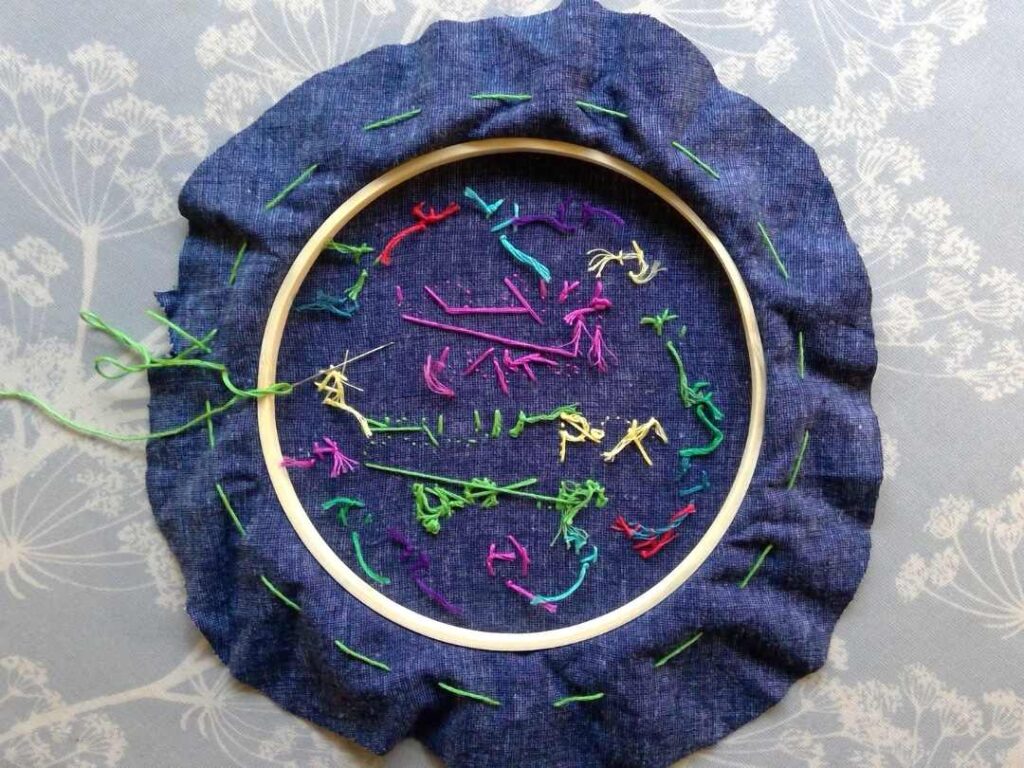
When your stitches meet pull the thread tight to gather the excess fabric neatly at the back of the hoop, and tie a double knot.
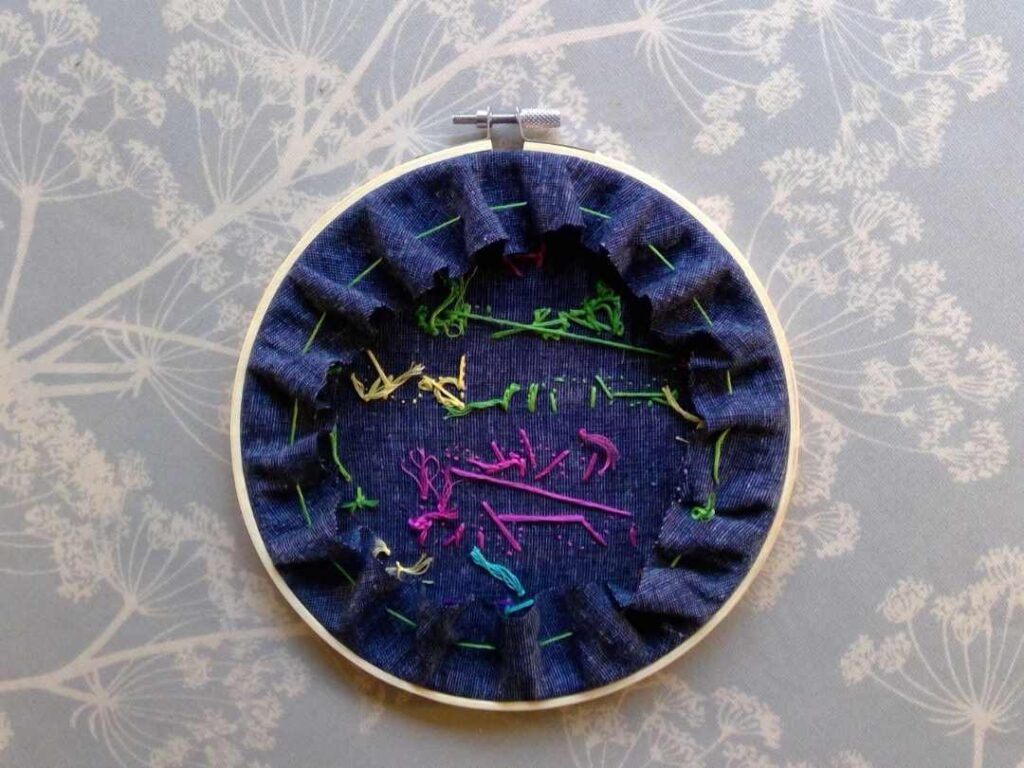
Tie a ribbon to the screw and you’re done!
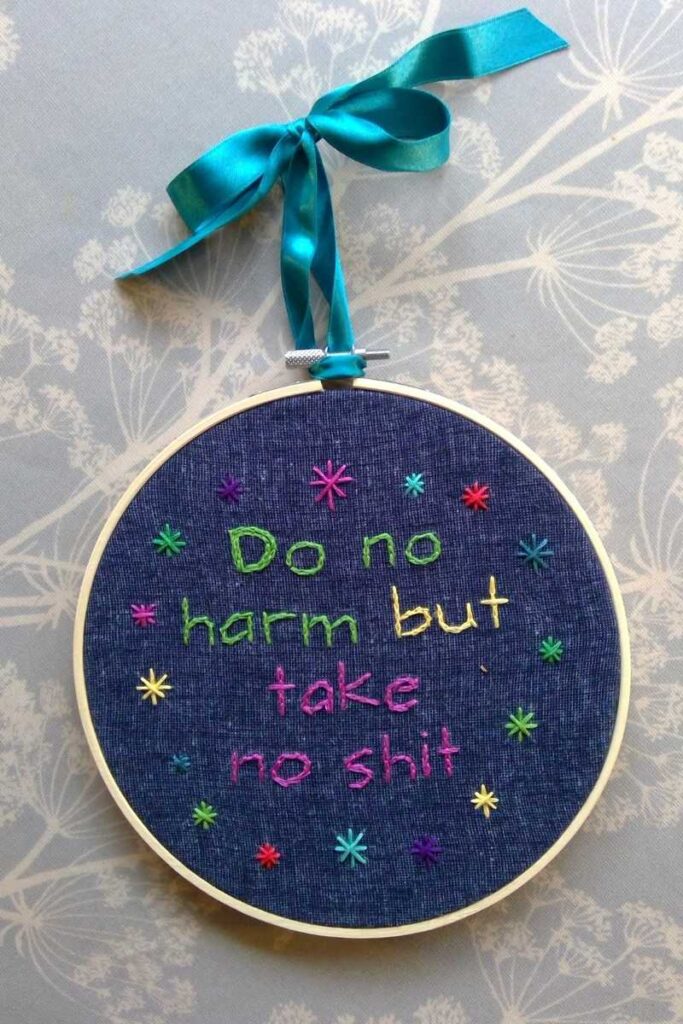
Remember that everything you need to embroider is online, from YouTube videos through to kits that are ready to stitch. Also visit www.dmc.com where you can find free downloadable patterns. And if you want inspiration try the Instagram hashtags #hoopartembroidery, #handembroidery and #embroiderywip for lots of ideas. Good luck!
Cath Janes is an anatomical embroiderer, selling her clinically accurate medical illustrations to medical professionals across the world. You can find her at cathjanes.com.



